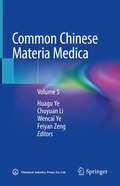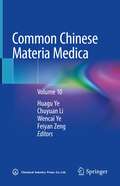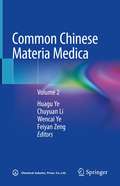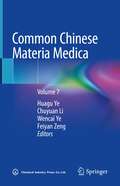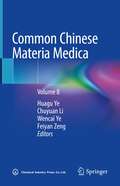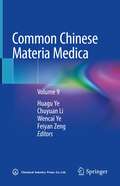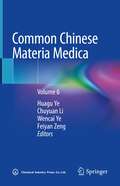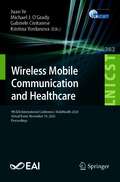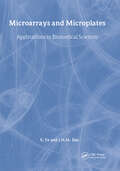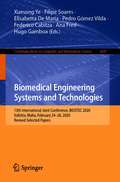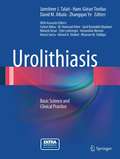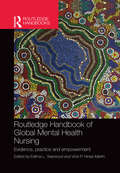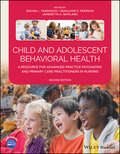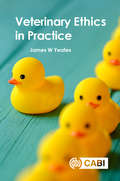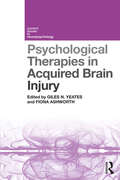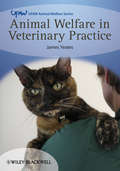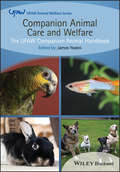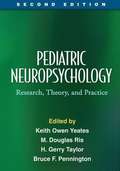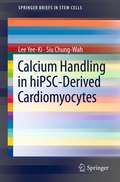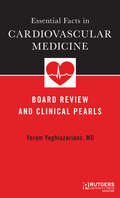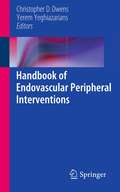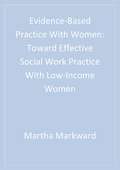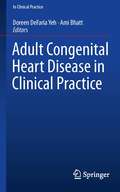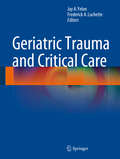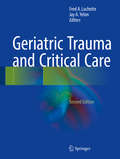- Table View
- List View
Common Chinese Materia Medica: Volume 5
by Huagu Ye Chuyuan Li Wencai Ye Feiyan ZengThis fifth volume contains 253 species of medicinal plants from 25 families, which are commonly used in Chinese medicine. The most important species are Stachyurus himalaicus of Stachyuraceae; Liquidambar formosana, Semiliquidambar cathayensis of Hamamelidaceae; Broussonetia papyrifera, Cudrania cochinchinensis, Cudrania tricuspidata, Ficus carica, Morus alba of Moraceae; Boehmeria nivea and Pouzolzia zeylanica of Urticaceae; Cannabis sativa of Cannabaceae; Ilex asprella, Ilex cornuta, Ilex latifolia, Ilex pubescens of Aquifoliaceae; Euonymus alatus, Tripterygium wilfordii of Celastraceae; Taxillus chinensis, Viscum liquidambaricola of Loranthaceae; Santalum album of Santalaceae; Berchemia lineata, Ventilago leiocarpa, Ziziphus jujuba, Ziziphus jujuba var. Spinosa, Elaeagnus pungens of Rhamnaceae; Citrus aurantium, Citrus grandis var. tomentosa, Citrus medica var. sarcodactylis, Citrus reticulata, Evodia rutaecarpa, Phellodendron chinense and Zanthoxylum bungeanum of Rutaceae. In each specie, it introduces the scientific names, medicinal names, morphologies, habitats, distributions, acquisition and processing methods of these medicinal plants, the content of medicinal properties, therapeutic effects, usage and dosage of these medicinal plants, and attaches unedited color pictures and pictures of part herbal medicines of each species. This book series has 10 volumes in total, which covers over 2000 kinds of Chinese medicines that are commonly used. These volumes not only introduce the efficacy function and some prescriptions of the medicines, but also introduce the biological characteristics of them in detail with clear photos of the habitats, so that readers can identify them in the field. Apart from the growing environment, the books expound the distribution areas and other information to facilitate researches and other applications. The volumes are targeted at readers of general interests and it is also of high referential value for scientific researcher and teachers. It can be used as a guide to researchers, clinical doctors, and students in the department of pharmaceutics and traditional Chinese medicine.
Common Chinese Materia Medica: Volume 10
by Huagu Ye Chuyuan Li Wencai Ye Feiyan ZengThis tenth volume records 5 species of resin, 74 species of animals, 41 species of minerals and fossils. There are resins such as Liquidambar orientalis, Commiphore myrrha, Boswellia carterii, Garcinia hanburyi; animals such as Solenognathus hardwickii, , Cervus nippon, Scolopendra subspinipes, Cryptotympana pustulata, Agkistrodon acutus, Bombyx mori, Collocalia esculenta, Moschus moschiferus, Hippocampus kelloggi, Gekko gekko; minerals and fossils such as mercury, gypsum, alum, mirabilite, cinnabar, actinolite, calomel, keel, dens draconis, lithodes, fossilia spiriferis. In each specie, it introduces the scientific names, medicinal names, morphologies, habitats, distributions, acquisition and processing methods of these medicinal plants, the content of medicinal properties, therapeutic effects, usage and dosage of these medicinal plants, and attaches unedited color pictures and pictures of part herbal medicines of each species. This book series has 10 volumes in total, which covers over 2000 kinds of Chinese medicines that are commonly used. These volumes not only introduce the efficacy function and some prescriptions of the medicines, but also introduce the biological characteristics of them in detail with clear photos of the habitats, so that readers can identify them in the field. Apart from the growing environment, the books expound the distribution areas and other information to facilitate researches and other applications. The volumes are targeted at readers of general interests and it is also of high referential value for scientific researcher and teachers. It can be used as a guide to researchers, clinical doctors, and students in the department of pharmaceutics and traditional Chinese medicine.
Common Chinese Materia Medica: Volume 2
by Huagu Ye Chuyuan Li Wencai Ye Feiyan ZengThis second volume contains 231 species of 40 families of medicinal plants. The most important family of which are Magnoliaceae, such as Magnolia officinalis and Magnolia officinalis subsp. biloba; Schisandra chinensis of Schisandraceae; Cinnamomum aromaticum of Lauraceae, Coptis chinensis Franch., Coptis omeiensis and Coptis teeta of Berberidaceae; Isatis indigotica, Lepidium apetalum and Raphanus sativus of Cruciferae; Rheum palmatum, Rheum officinale and Rheum taguticum of Polygonaceae, etc. In each specie, it introduces the scientific names, herbal medicine names, characteristics, habitats, distributions, Acquisition and processing methods, medicinal traits, tastes, functions, use and dosages, and other information of medicinal plants. The color pictures of all species in their wild forms are presented, along with some pictures of medicinal products made of them. This book series has totally 10 volumes, which covers 2000 kinds of Chinese medicines that are commonly seen or used. These volumes not only introduce the efficacy function and some prescriptions of the medicines, but also introduce the biological characteristics of them in detail with clear photos of the habitats, so that readers can identify them in the field. Apart from the growing environment, the books expound the distribution areas and other information to facilitate researches and other applications. The volumes are targeted at readers of general interests and it is also of high referential value for scientific researcher and teachers. It can be used as a guide to researchers, clinical doctors, and students in the department of pharmaceutics and traditional Chinese medicine.
Common Chinese Materia Medica: Volume 7
by Huagu Ye Chuyuan Li Wencai Ye Feiyan ZengThis seventh volume describes 247 species of 9 families of medicinal plants, which are commonly used in Chinese medicine. The most important species are Adina rubella, Gardenia jasminoides, Hedyotis diffusa, Morinda officinalis, Rubia cordifolia, Uncaria hirsuta, Uncaria macrophylla, Uncaria rhynchophylla, Uncaria sessilifructus, Uncaria sinensis of Rubiaceae; Lonicera confusa, Lonicera hypoglauca, Lonicera macranthoides, Lonicera japonica of Caprifoliaceae; Patrinia scabiosaefolia, Patrinia villosa, Nardostachys jatamansi of Valerianaceae; Dipsacus asperoides of Dipsacaceae; Arctium lappa, Artemisia annua, Artemisia argyi, Artemisia capillaris, Artemisia scoparia, Atractylodes lancea, Atractylodes macrocephala, Dendranthema indicum, Dendranthema morifolium, Eupatorium chinense, Eupatorium fortunei, Inula helenium, Saussurea costus, Saussurea involucrata, Senecio scandens, Serratula chinensis, Siegesbeckia orientalis, Solidago decurrens, Taraxacum mongolicum, Tussilago farfara、Xanthium sibiricum of Compositae; Gentiana crassicaulis, Gentiana manshurica, Gentiana rigescens, Gentiana scabra, Swertia pseudochinensis of Valerianaceae; Lysimachia christinae of Primulaceae and Plantago asiatica of Plantaginaceae. In each specie, it introduces the scientific names, medicinal names, morphologies, habitats, distributions, acquisition and processing methods of these medicinal plants, the content of medicinal properties, therapeutic effects, usage and dosage of these medicinal plants, and attaches unedited color pictures and pictures of part herbal medicines of each species. This book series has 10 volumes in total, which covers over 2000 kinds of Chinese medicines that are commonly used. These volumes not only introduce the efficacy function and some prescriptions of the medicines, but also introduce the biological characteristics of them in detail with clear photos of the habitats, so that readers can identify them in the field. Apart from the growing environment, the books expound the distribution areas and other information to facilitate researches and other applications. The volumes are targeted at readers of general interests and it is also of high referential value for scientific researcher and teachers. It can be used as a guide to researchers, clinical doctors, and students in the department of pharmaceutics and traditional Chinese medicine.
Common Chinese Materia Medica: Volume 8
by Huagu Ye Chuyuan Li Wencai Ye Feiyan ZengThis eighth volume describes 272 species of 13 families of medicinal plants, which are commonly used in Chinese medicine. The most important species are Adenophora stricta, Adenophora tetraphylla, Codonopsis pilosula, Codonopsis tangshen and Platycodon grandiflorus of Campanulaceae; Lobelia chinensis of Lobeliaceae; Hyoscyamus niger, Lycium barbarum and Lycium ruthenicum of Solanaceae; Cuscuta australis, Cuscuta chinensis, Erycibe obtusifolia of Convolvulaceae; Lagotis brevituba, Rehmannia glutinosa, Scrophularia ningpoensis of Scrpophulariaceae; Aeginetia indica, Cistanche deserticola, Cistanche of Orobanchaceae; Campsis grandiflora, Oroxylum indicum of Bignoniaceae; Andrographis paniculata, Strobilanthes cusia of Acanthaceae; Callicarpa formosana, Callicarpa kwangtungensis, Clerodendrum cyrtophyllum, Clerodendrum fortunatum, Verbena officinalis, Vitex trifolia of Verbenaceae; Agastache rugosa, Ajuga decumbens, Clerodendranthus spicatus, Clinopodium chinense, Glechoma longituba, Lamiophlomis rotata, Leonurus japonicus, Lycopus lucidus var. Hirtus, Mesona chinensis, Perilla frutescens, Pogostemon cablin, Prunella vulgaris, Salvia bowleyana, Salvia miltiorrhiza, Schizonepeta tenuifolia, Scutellaria baicalensis of Lamiaceae. In each specie, it introduces the scientific names, medicinal names, morphologies, habitats, distributions, acquisition and processing methods of these medicinal plants, the content of medicinal properties, therapeutic effects, usage and dosage of these medicinal plants, and attaches unedited color pictures and pictures of part herbal medicines of each species. This book series has 10 volumes in total, which covers over 2000 kinds of Chinese medicines that are commonly used. These volumes not only introduce the efficacy function and some prescriptions of the medicines, but also introduce the biological characteristics of them in detail with clear photos of the habitats, so that readers can identify them in the field. Apart from the growing environment, the books expound the distribution areas and other information to facilitate researches and other applications. The volumes are targeted at readers of general interests and it is also of high referential value for scientific researcher and teachers. It can be used as a guide to researchers, clinical doctors, and students in the department of pharmaceutics and traditional Chinese medicine.
Common Chinese Materia Medica: Volume 9
by Huagu Ye Chuyuan Li Wencai Ye Feiyan ZengThis ninth volume describes 285 species of medicinal plants of 30 families, which are commonly used in Chinese medicine. The most important species are Alisma orientale of Alismaceae; Commelina communis of Commelinaceae; Eriocaulon buergerianum of Eriocaulaceae; Alpinia galanga, Alpinia hainanensis, Alpinia officinarum, Alpinia oxyphylla, Amomum compactum, Amomum kravanh, Amomum villosum, Amomum villosum var. xanthioides, Amomum longiligulare, Amomum tsao-ko, Costus speciosus, Curcuma aromatica, Curcuma kwangsiensis, Kaempferia galanga, Zingiber officinale of Zingiberaceae; Anemarrhena asphodeloides, Asparagus cochinchinensis, Disporum cantoniense, Fritillaria cirrhosa, Fritillaria delavayi, Fritillaria unibracteata, Lilium brownii, Lilium brownii, Liriope muscari, Ophiopogon japonicus, Polygonatum kingianum, Polygonatum sibiricum, Polygonatum odoratum of Liliaceae; Paris polyphylla of Trilliaceae; Smilax glabra and Smilax riparia of Smilacaceae;Acorus calamus, Acorus tatarinowii, Aglaonema modestum, Alocasia macrorrhiza, Arisaema amurense, Homalomena occulta, Lasia spinosa, Pinellia pedatisecta, Pinellia ternata, Pistia stratiotes, Typhonium giganteum of Araceae; Sparganium stoloniferum of Sparganiaceae; Typha angustifolia of Typhaceae; Allium chinense , Allium sativum, Allium tuberosum of Amaryllidaceae; Crocus sativus, Belamcanda chinensis of Iridaceae; Dioscorea opposita of Dioscoreaceae; Areca catechu of Palmae; Bletilla striata, Dendrobium aduncum, Dendrobium loddigesii, Dendrobium nobile, Dendrobium officinale, Gastrodia elata of Orchidaceae; Juncus effusus of Juncaceae; Cyperus rotundus of Cyperaceae; Coix lacryma-jobi var. ma-yuen of Gramineae. In each specie, it introduces the scientific names, medicinal names, morphologies, habitats, distributions, acquisition and processing methods of these medicinal plants, the content of medicinal properties, therapeutic effects, usage and dosage of these medicinal plants, and attaches unedited color pictures and pictures of part herbal medicines of each species. This book series has 10 volumes in total, which covers over 2000 kinds of Chinese medicines that are commonly used. These volumes not only introduce the efficacy function and some prescriptions of the medicines, but also introduce the biological characteristics of them in detail with clear photos of the habitats, so that readers can identify them in the field. Apart from the growing environment, the books expound the distribution areas and other information to facilitate researches and other applications. The volumes are targeted at readers of general interests and it is also of high referential value for scientific researcher and teachers. It can be used as a guide to researchers, clinical doctors, and students in the department of pharmaceutics and traditional Chinese medicine.
Common Chinese Materia Medica: Volume 6
by Huagu Ye Chuyuan Li Wencai Ye Feiyan ZengThis sixth volume describes 226 species of 32 families of medicinal plants, which are commonly used in Chinese medicine. The most important species are Aquilaria sinensis and Daphne genkwa of Thymelaeaceae; Benincasa hispida, Siraitia grosvenorii, Trichosanthes kirilowii and Trichosanthes rosthornii of Cucurbitaceae; Camellia sinensis of Theaceae; Cleistocalyx operculatus, Eugenia caryophyllata and Rhodomyrtus tomentosa of Myrtaceae; Osbeckia chinensis of Melastomataceae; Quisqualis indica and Terminalia chebula of Combretaceae; Hypericum japonicum of Hypericaceae; Microcos paniculata of Tiliaceae; Hibiscus mutabilis of Malvaceae; Croton crassifolius, C. lachnocarpus, C. tiglium, Euphorbia humifusa, E. lathyris, E. pekinensis, Phyllanthus emblica and Sauropus spatulifolius of Euphorbiaceae. In each specie, it introduces the scientific names, medicinal names, morphologies, habitats, distributions, acquisition and processing methods of these medicinal plants, the content of medicinal properties, therapeutic effects, usage and dosage of these medicinal plants, and attaches unedited color pictures and pictures of part herbal medicines of each species.This book series has 10 volumes in total, which covers over 2000 kinds of Chinese medicines that are commonly used. These volumes not only introduce the efficacy function and some prescriptions of the medicines, but also introduce the biological characteristics of them in detail with clear photos of the habitats, so that readers can identify them in the field. Apart from the growing environment, the books expound the distribution areas and other information to facilitate researches and other applications. The volumes are targeted at readers of general interests and it is also of high referential value for scientific researcher and teachers. It can be used as a guide to researchers, clinical doctors, and students in the department of pharmaceutics and traditional Chinese medicine.
Wireless Mobile Communication and Healthcare: 9th EAI International Conference, MobiHealth 2020, Virtual Event, November 19, 2020, Proceedings (Lecture Notes of the Institute for Computer Sciences, Social Informatics and Telecommunications Engineering #362)
by Juan Ye Michael J. O’Grady Gabriele Civitarese Kristina YordanovaThis book constitutes the refereed post-conference proceedings of the 9th International Conference on Mobile Communication and Healthcare, MobiHealth 2020, held in December 2020. Due to Covid-19 pandemic the conference was held virtually. The book contains 13 full papers selected from the main conference and 10 full papers from two workshops on medical artificial intelligence and on digital healthcare technologies. The conference papers are organized in topical sections on wearable technologies; health telemetry; mobile sensing and assessment; machine learning in eHealth applications.
Microarrays and Microplates: Applications in Biomedical Sciences (Advanced Methods Ser.)
by S. Ye I.N.M. DayThe 'Advanced Methods' series is intended for advanced undergraduates, postgraduates and established research scientists. Titles in the series are designed to cover current important areas of research in life sciences, and include both theoretical background and detailed protocols. The aim is to give researchers sufficient theory, supported by references, to take the given protocols and adapt them to their particular experimental systems.Microarrays and Microplates title looks at the new microarray and microplate-based technologies which facilitate large-scale analysis of DNA sequence variants, mRNA molecules and proteins. The book provides a review of the various methodologies being used to identify genetic variants and gene regulation and guides readers through both the application of these methodologies and experimental procedures.
Biomedical Engineering Systems and Technologies: 13th International Joint Conference, BIOSTEC 2020, Valletta, Malta, February 24–26, 2020, Revised Selected Papers (Communications in Computer and Information Science #1400)
by Xuesong Ye Filipe Soares Elisabetta De Maria Pedro Gómez Vilda Federico Cabitza Ana Fred Hugo GamboaThis book constitutes extended and revised versions of the selected papers from the 13th International Joint Conference on Biomedical Engineering Systems and Technologies, BIOSTEC 2020, held in Valletta, Malta, in February 2020.The 29 revised and extended full papers presented were carefully reviewed and selected from a total of 363 submissions. The papers are organized in topical sections on biomedical electronics and devices; bioimaging; bioinformatics models, methods and algorithms; bio-inspired systems and signal processing; health informatic
Urolithiasis
by Zhangqun Ye Jamsheer J. Talati Hans-Goran Tiselius David M. AlbalaUrolithiasis: Basic Science and Clinical Practice is a comprehensive text that assists urologists in defining the best choice of treatment for each case through a balanced presentation of underlying science, diagnostic methods and practical tips, with additional discussions on educational issues, costs and management of resources. This user-friendly practical resource is replete with full-color illustrations and radiographs, covering all aspects of stone disease, and offering perspectives from Europe, the Americas, China, South Asia, Africa, and Australia. Topics include the biochemical and physiological basis of stone formation, treatment options, complications, assessment of techniques and technologies available, and guidelines on the prevention of stone recurrence. Urolithiasis: Basic Science and Clinical Practice is the definitive text on stone disease and is a must read for young consultants starting a new practice, and urologists in residence and training.
Routledge Handbook of Global Mental Health Nursing: Evidence, Practice and Empowerment
by Edilma Yearwood Vicki Hines-MartinAwarded second place in the 2017 AJN Book of the Year Awards in Psychiatric and Mental Health Nursing. "I welcome, at long last, a book on global mental health targeted to nurses, the front-line health worker for billions of people around the world. The roles that nurses can, and should, play in mental health care are diverse and this book addresses both well-trod as well as emerging concerns across the continuum of care from promotion to prevention to treatment. Importantly, at the heart of this diversity is the foundation of compassion and care, the hallmark of the nursing profession." – Vikram Patel, Professor of International Mental Health and Wellcome Trust Principal Research Fellow in Clinical Science, Centre for Global Mental Health, London School of Hygiene and Tropical Medicine, UK Psychiatric disorders have consistently been identified as serious and significant global burdens of disease, yet meeting the needs of people in mental distress has not often been a priority in health care. This important reference work sets out the knowledge base for understanding the state of mental health care globally, and translating that into effective practice. The Handbook provides a historical and contemporary context of mental health care, identifies and discusses evidence-based standards of care and strategies for mental health promotion and explores the need to deliver care from interdisciplinary and community-based models, placing these imperatives within a human rights and empowerment framework. It is made up of four core sections which look at: Key and emerging issues that affect global mental health practice and research, including the social context of health; Evidence-based health promotion strategies for major areas of practice internationally; A range of country studies, reflecting different problems and approaches to mental health and mental health care internationally; and What constitutes empowering practice. The only comprehensive work looking at global perspectives on mental health nursing, this is an invaluable reference for all students, academics and professionals involved in mental health research with an interest in global or cross-cultural issues.
Child and Adolescent Behavioral Health: A Resource for Advanced Practice Psychiatric and Primary Care Practitioners in Nursing
by Edilma L. Yearwood Geraldine S. Pearson Jamesetta A. NewlandResearch has shown that a range of adult psychiatric disorders and mental health problems originate at an early age, yet the psychiatric symptoms of an increasing number of children and adolescents are going unrecognized and untreated—there are simply not enough child psychiatric providers to meet this steadily rising demand. It is vital that advanced practice registered nurses (APRNs) and primary care practitioners take active roles in assessing behavioral health presentations and work collaboratively with families and other healthcare professionals to ensure that all children and adolescents receive appropriate treatment. Child and Adolescent Behavioral Health helps APRNs address the mental health needs of this vulnerable population, providing practical guidance on assessment guidelines, intervention and treatment strategies, indications for consultation, collaboration, referral, and more. Now in its second edition, this comprehensive and timely resource has been fully updated to include DSM-5 criteria and the latest guidance on assessing, diagnosing, and treating the most common behavioral health issues facing young people. New and expanded chapters cover topics including eating disorders, bullying and victimization, LGBTQ identity issues, and conducting research with high-risk children and adolescents. Edited and written by a team of accomplished child psychiatric and primary care practitioners, this authoritative volume: Provides state-of-the-art knowledge about specific psychiatric and behavioral health issues in multiple care settings Reviews the clinical manifestation and etiology of behavioral disorders, risk and management issues, and implications for practice, research, and education Offers approaches for interviewing children and adolescents, and strategies for integrating physical and psychiatric screening Discusses special topics such as legal and ethical issues, cultural influences, the needs of immigrant children, and child and adolescent mental health policy Features a new companion website containing clinical case studies to apply concepts from the chapters Designed to specifically address the issues faced by APRNs, Child and Adolescent Behavioral Health is essential reading for nurse practitioners and clinical nurse specialists, particularly those working in family, pediatric, community health, psychiatric, and mental health settings.
Veterinary Ethics in Practice
by Dr James W YeatesVeterinary Ethics in Practice gives non-specialist veterinary professionals an introduction to ethics. It helps readers to think about, and discuss, ethical dilemmas and viewpoints faced by practitioners in their daily practice. The book: · Is an important primer and introduction to basic ethical dilemmas. · Helps improve ethical reasoning, through the use of numerous worked examples, leading to increased confidence in decisions and actions. · Explains key ethical concepts and terminology making the subject easier to understand. · Contains case studies which help bring real dilemmas to life. With carefully crafted themes and problem cases in farm animal, companion animal, equine, wildlife, zoo and laboratory settings, the book provides an important yet concise and accessible introduction to moral decision-making in veterinary practice.
Psychological Therapies in Acquired Brain Injury (Current Issues in Neuropsychology)
by Giles N. Yeates Fiona AshworthThe psychological impact of an acquired brain injury (ABI) can be devastating for both the person involved and their family. This book describes the different types of psychological therapies used to ameliorate psychological distress following ABI. Each chapter presents a new therapeutic approach by experts in the area. Readers will learn about the key principles and techniques of the therapy alongside its application to a specific case following ABI. In addition, readers will gain insight into which approach may be most beneficial to whom as well as those where there may be additional challenges. Covering a wide array of psychological therapies, samples range from more historically traditional approaches to those more recently developed. Psychological Therapies in Acquired Brain Injury will be of great interest to clinicians and researchers working in brain injury rehabilitation, as well as practitioners, researchers and students of psychology, neuropsychology and rehabilitation.
Animal Welfare in Veterinary Practice
by James YeatesA practical guide to help veterinarians improve the welfare of their patients in their everyday work. A concise and accessible introduction to welfare that is both interesting and valuable in practice.The book describes ways to evaluate patients, develop in-practice quality of life assessments, resolve difficult clinical dilemmas, and turn good decisions into real welfare outcomes. It reviews available scientific information, legal issues and ethical dilemmas, and relates these to everyday case studies throughout. It provides ways for all veterinary professionals to develop their animal welfare understanding, without assuming prior knowledge, while advancing the wisdom and abilities of experienced practitioners.Key features:Presents practical and realistic methods for working with owners to improve patients' welfare within the constraints of everyday practice.Provides useful advice for work within many legal jurisdictions.Includes summaries of research, vital references, and further reading sources.Key points are recapped at the end of each chapter.Suitable for all those working in the veterinary and related professions, including veterinarians, veterinary nurses, animal welfare scientists, animal behaviourists, paraprofessionals and lay staff.Published as a part of the prestigious Wiley-Blackwell - UFAW Animal Welfare series. UFAW, founded 1926, is an internationally recognised, independent, scientific and educational animal welfare charity. For full details of all titles available in the UFAW series, please visit www.wiley.com/go/ufaw.
Companion Animal Care and Welfare: The UFAW Companion Animal Handbook (UFAW Animal Welfare)
by James YeatesCompanion Animal Care and Welfare: The UFAW Companion Animal Handbook presents a comprehensive, accessible and practical reference for all parties seeking information about the proper care of companion animals. Identifies the needs of companion animals, explains how we know these needs, and gives scientifically-backed advice on how to meet these needs Promotes the most humane treatment and best possible care of our companion animals Addresses controversial issues such as selective breeding, companion animal showing, the keeping of exotic species, and the international pet trade Covers the husbandry and care of all major companion animal species, including mammals, birds, fish, reptiles and amphibians
Pediatric Neuropsychology, Second Edition
by Keith Yeates M. RisThe most comprehensive, authoritative reference of its kind, this acclaimed work examines a wide range of acquired, congenital, and developmental brain disorders and their impact on children\u2019s neuropsychological functioning. Leading experts present state-of-the-art knowledge about how each condition affects the developing brain; the nature and severity of associated cognitive, behavioral, and psychosocial impairments; and effective approaches to clinical evaluation and treatment planning. New to This Edition Reflects significant scientific advances. An additional coeditor, Bruce F. Pennington. Chapters on math, reading, and language disabilities; attention-deficit/hyperactivity disorder; autism; and intellectual disabilities. Medical disorders not covered in prior edition acute disseminated encephalomyelitis and multiple sclerosis; tuberous sclerosis; childhood stroke; and fetal alcohol syndrome. A chapter on evidence-based neuropsychological interventions.
Calcium Handling in hiPSC-Derived Cardiomyocytes: Calcium Handling In Hipsc-derived Cardiomyocytes (SpringerBriefs in Stem Cells)
by Lee Yee-Ki Siu Chung-WahCalcium is crucial in governing contractile activities of myofilaments in cardiomyocytes, any defeats in calcium homeostasis of the cells would adversely affect heart pumping action. The characterization of calcium handling properties in human induced pluripotent stem cell-derived cardiomyocytes (iPS-CMCs) is of significant interest and pertinent to the stem cell and cardiac regenerative field because of their potential patient-specific therapeutic use.
Essential Facts in Cardiovascular Medicine: Board Review and Clinical Pearls
by Dr Yerem YeghiazariansThe treatment and management of cardiovascular disease has seen rapid advances in recent years; as a trainee or practitioner of cardiovascular medicine, it can be difficult to find the time to stay abreast of recent updates in information. Unlike standard exhaustive text and reference titles, Essential Facts in Cardiovascular Medicine provides the most critical facts and clinical pearls of cardiovascular medicine, in a high-yield, concise, bulleted format that can fit in your pocket. Essential Facts in Cardiovascular Medicine is the perfect guide to enhance your cardiovascular knowledge, prepare for board examinations, and improve clinical practice. Essential Facts in Cardiovascular Medicine covers numerous important topics from the basics of Statistics, to factoids in General Cardiology, Physical Exam, EKG, Congenital Heart Disease, Valvular Heart Disease, Heart Failure/Transplant, Acute Coronary Syndromes, Pericardial Diseases, Electrophysiology, Pharmacology, Pregnancy, Pulmonary Hypertension, Peripheral Vascular Disease, Echocardiography, Formulas, Interventional Cardiology and Cardiac Tumors.
Handbook of Endovascular Peripheral Interventions
by Yerem Yeghiazarians Christopher D OwensThe Handbook of Endovascular Peripheral Interventions has been written to serve as a comprehensive guide for both the beginner and advanced interventionalist. Covering all aspects of percutaneous peripheral vascular interventions, each chapter of this highly illustrated book provides a brief background, etiology, clinical presentation, imaging, and percutaneous treatment of different vascular conditions. Importantly, Tips of the Trade and How I Do It sections within each chapter make the handbook practical for daily use. These invaluable pearls are provided by contributing chapter authors who are experts in the field. Edited by Dr. Christopher D. Owens (Division of Vascular Surgery) and Dr. Yerem Yeghiazarians (Division of Interventional Cardiology), from the University of California San Francisco School of Medicine, the Handbook of Endovascular Peripheral Interventions is a collaborative effort between cardiologists, vascular surgeons, and radiologists. Since each subspecialty brings unique expertise and experience to the field, this handbook will be a valuable resource for all physicians currently working in peripheral vascular interventions.
Evidence-Based Practice With Women: Toward Effective Social Work Practice With Low-Income Women
by Bonnie L. Yegidis Martha J. MarkwardThis one-of-a-kind book presents evidence-based coverage of the assessment and treatment of the most common mental health disorders among women, particularly low-income women. For each disorder— depression, post-traumatic stress disorder and trauma (including sexual abuse), generalized anxiety disorder, substance use disorder, and borderline personality disorder—the authors include assessment instruments and detailed case examples that illustrate the assessment and treatment recommendations.
Adult Congenital Heart Disease in Clinical Practice (In Clinical Practice)
by Doreen DeFaria Yeh Ami BhattThere is an evident practice gap in education of general adult cardiologists on long-term management of congenital heart disease (CHD). The goal of this book is to help general cardiologists, but also pediatricians and related care providers in the management and diagnosis of adult CHD.Adult Congenital Heart Disease in Clinical Practice provides clear, practical advice on adult CHD for the busy fellow, resident and practicing clinician. It includes training and revision material to assist learning and is formatted in such a way as to provide short, concise content designed for easy recall of salient facts.
Geriatric Trauma and Critical Care
by Jay A. Yelon Fred A. LuchetteGeriatric Trauma and Critical Care provides a multidisciplinary overview of the assessment and management of the elderly patient presenting with surgical pathology. By utilizing current literature and evidence-based resources, the textbook elucidates the unique nature of caring for the elderly population. The structure of the volume provides the reader with an overview of the physiologic and psychological changes, as well as the impact on the healthcare system, associated with the aging process. Emphasis is placed on the impact of aging, pre-existing medical problems, effects of polypharmacy, advanced directives and end-of-life wishes on acute surgical problems, including trauma and surgical critical care. Special attention is given to the ethical implications of management of the aged. The multidisciplinary contributors provide a unique point of view not common to surgical texts. The textbook is the definitive resource for practicing surgeons, emergency medicine physicians, intensivists, anesthesiologists, hospitalists, geriatricians, as well as surgical residents, nurses and therapists, all who care for elderly patients with surgical emergencies.
Geriatric Trauma and Critical Care
by Jay A. Yelon Fred A. LuchetteWith the expertise of an author panel of leading clinicians in the field of surgery, trauma, critical care and geriatrics the new edition of this text addresses the explosion in knowledge on the impact aging has on injury, acute illness and critical care management. The text covers the physiologic changes associated with aging, as well as the clinical assessment, stratification, and management of acute illness and injury. Furthermore, the new edition discusses the full spectrum of critical care management of the elderly. Part I explores the impact of aging on health and the healthcare system. There will be detailed discussion on the physiologic effects of aging and the impact on clinical management. The management of common surgical emergencies in the elderly is addressed in Part II. Part III addresses the evaluation and management of trauma and injury. Finally, Part IV explores the specific challenges of critical care management, including end-of-life and ethics, in the geriatric population. Updated information, reflective of the expansive literature, is addressed in all sections. New to the second edition are chapters on prehospital care, burns, nursing concerns, and abdominal solid organ injury. Appropriate chapters will include case vignettes and clinical algorithms. All chapters include a bullet-point summary. Geriatric Trauma and Critical Care, 2nd Edition will be of great value to trauma surgeons, acute care surgeons, critical care specialists, emergency medicine physicians, geriatricians, general surgeons, and trainees in surgery, critical care, and emergency medicine. Advanced practice nurses, critical care nurses, and physician assistants will also find this a useful and practical resource.
